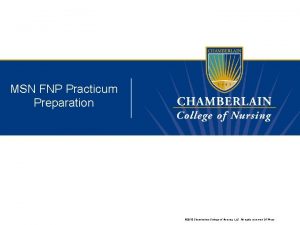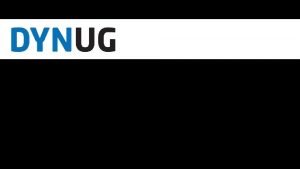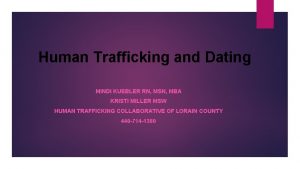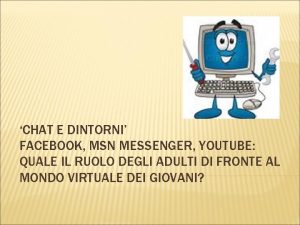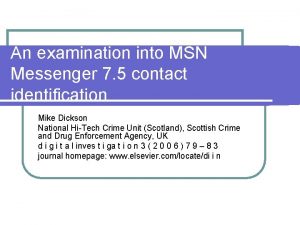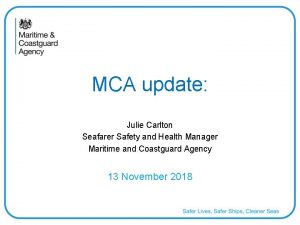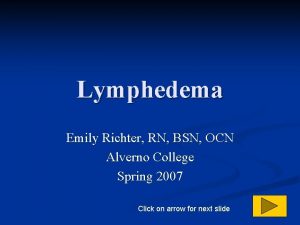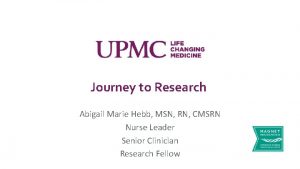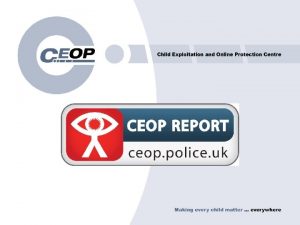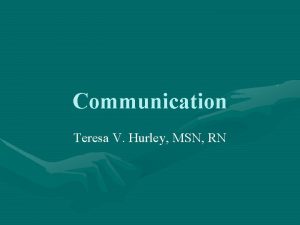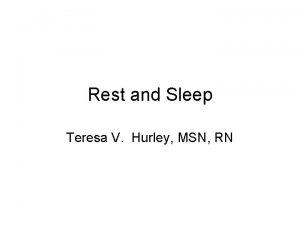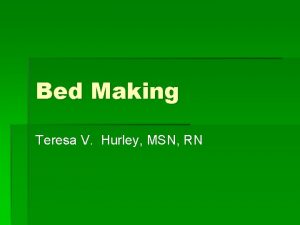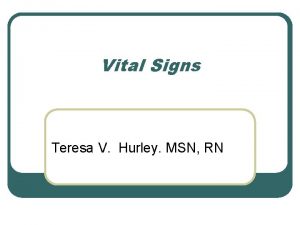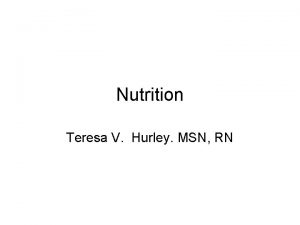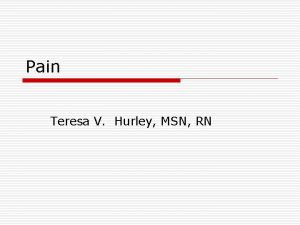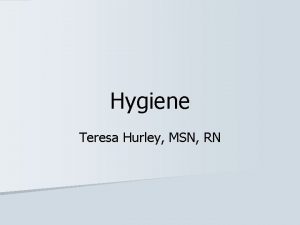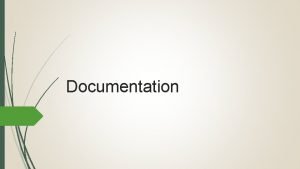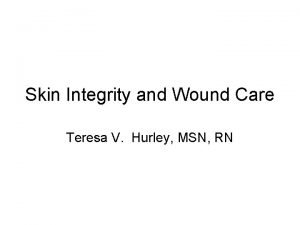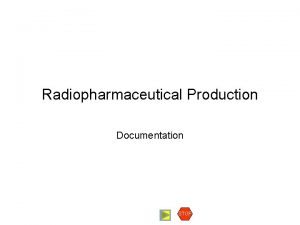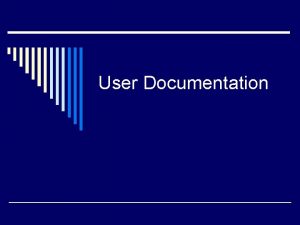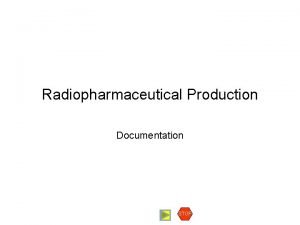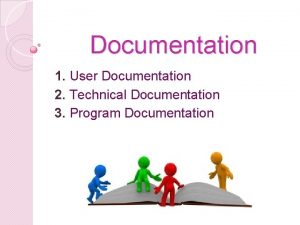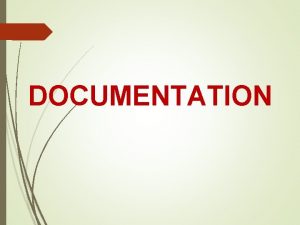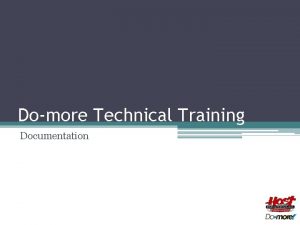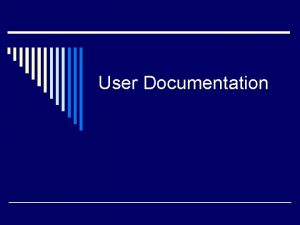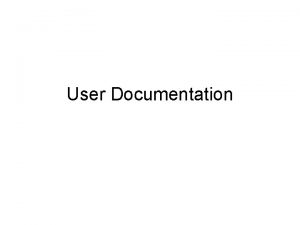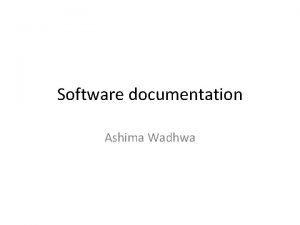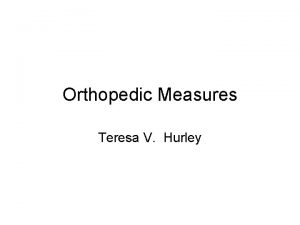Documentation and Reporting Teresa V Hurley MSN RN























![INCIDENT REPORT l l Unusual Occurrence, Variance or Incident Report [IR] Helps to document INCIDENT REPORT l l Unusual Occurrence, Variance or Incident Report [IR] Helps to document](https://slidetodoc.com/presentation_image/5121d3308fae028aefa9b0e8c2663698/image-24.jpg)
- Slides: 24

Documentation and Reporting Teresa V. Hurley MSN, RN

Charting l The process of recording vital information that is communicated to others. – – Facts and figures that are specific, clear and precise Contains correct language, medical terms and abbreviations Observations, interventions and communications Reports to authorities as child or elder abuse

Charting l l l Assessment of quality and effectiveness of nursing care Permanent record Assessment of quality and effectiveness of nursing care Legal Document in the event of litigation or prosecution If not charted, legally it was not done

Charting l Legal Requirements -regulated by state laws -professional standards -Joint Commission on Accreditation of Health Care Organizations [JCAHO]

Charting Specifics l l Black ball point pen because it microfilms best Errors are corrected by drawing a single line through the error. Above write “Mistaken Entry” [ME] and your initial. No white-out, erasers, eradicators, covering-up materials Error no longer written. Juries associate it with an actual nursing mistake

Charting Specifics l Each entry is signed with your first initial, last name and status J. Smith, SN l R. Jones, RN l l Script not printing is used for the signature and it should appear at the right hand margin of the narrative note.

Charting Specifics Notes are written on each succeeding line l Lines are not omitted l A horizontal line is drawn to “fill up” a partial line l Each entry is dated and timed l Begin with a Capital letter l End with a period Does not have to be complete sentences l

Charting Specifics l l l l Be accurate Describe behaviors Use approved abbreviations and symbols Spell correctly Used correct terminology and grammar Write legibly [Printing is acceptable] Chart only what you have done Do not double chart [data appears on a flow sheet] except when the patient has a change in their condition

Charting Specifics l l l If you forgot to chart something do so on the next available line putting the time of the event and not the time you are actually charting it Physician visits Time client left and returned to unit including transportation and destination Medications: dosage, route, site, pain relieved, time worked, and/or side effects Treatments

Charting Specifics l Chart objective facts -ate 100% and not “good appetite” -client/patient c/o placed in quotes “stabbing; “chest pain”; “going down” his “left arm” -objective observations -skin cold and clammy; diaphoretic, -v/s B/P 70/40; Pulse 122 bpm, irregular, 1+;

Charting Format l l Assessment at the start of the shift Changes in mental, psychological, physiological conditions Reactions to procedures or medications Teaching -Document what was taught and the client’s response

Charting Systems l Source-oriented – – – Data entered according to the source [i. e. nurse, MD, social worker, respiratory therapy etc. ] Form of charting is a narrative Overall picture is difficult to ascertain

Narrative Charting l l Used with flow sheets and other systems Chronological data quickly documented Familiar form Used in all types of settings

Narrative Charting Disadvantages l l l Lack of a systematic structure hinders making relationships between data Requires time May lack information concerning client outcomes Quality Assurance monitoring more difficult Relevant data found in several places

Charting Systems l Problem-oriented -Data organized based on problems -Each member of the health team documents on the same problem -The overall picture can be seen easily -Focus is on the client and not on the person or department reporting

Problem-Oriented Medical Records POMR l l l Focus is on the client One set of progress notes is used by all persons caring for the client Format is called SOAP or SOAPIE

POMR: SOAP or SOAPIE l l l Subjective Objective Assessment Plan Implementation Evaluation

Charting Systems l Computer-Assisted -Data legible -Quick access to data and information between departments -Easily retrievable -Quick assess to data -Confidentiality maintained -Bedside computers increase accuracy and speed of charting -Meet JCAHO standards -Increase speed and completeness of reimbursement

Disadvantages of Computer-Assisted Charting l l Expensive to purchase and update Problems with “downtime” interfere in charting and receiving information Increase charting time if not enough terminals Reliance on technology instead questioning data which may be wrong

REPORTING: INTRASHIFT l Verbal reports during your shift to other team members -Significant changes in Vital signs -Unusual reactions to treatments, procedures, medications - Changes in physical or psychological condition

Reporting l Intershift – – – Verbal or tape recorded Client’s Name, Age, Room Number, MD, Diagnosis, Date of Surgery Changes or unusual occurrences Laboratory results, studies, tests to be done on next shift Physical or psychological problems

REPORTING: MD NOTIFICATION l l Significant changes in physical assessment, abnormal laboratory findings, test results Identify self to MD by name, status, unit and client’s name State exact reason why you are calling Current vital signs, laboratory results, medications etc. should be available

REPORT to NURSING ADMINISTRATORS l l Written or Verbal each shift Data on critically ill clients Unusual occurrences Problems with clients, families or other disciplines
![INCIDENT REPORT l l Unusual Occurrence Variance or Incident Report IR Helps to document INCIDENT REPORT l l Unusual Occurrence, Variance or Incident Report [IR] Helps to document](https://slidetodoc.com/presentation_image/5121d3308fae028aefa9b0e8c2663698/image-24.jpg)
INCIDENT REPORT l l Unusual Occurrence, Variance or Incident Report [IR] Helps to document quality care Identify areas where staff development is needed Maintain detailed record of incident for possible legal action
 Rbt session note example
Rbt session note example Hurley phantom 120
Hurley phantom 120 Siobhan hurley
Siobhan hurley Kirsten hurley
Kirsten hurley Who made history
Who made history Dene hurley
Dene hurley Tape v hurley
Tape v hurley Dr jeff hurley
Dr jeff hurley Hurley range
Hurley range Lynda hurley
Lynda hurley Cubemap generator
Cubemap generator Instant messenger msn
Instant messenger msn![Msn] Msn]](data:image/svg+xml,%3Csvg%20xmlns=%22http://www.w3.org/2000/svg%22%20viewBox=%220%200%20200%20200%22%3E%3C/svg%3E) Msn]
Msn] Chamberlain fnp reviews
Chamberlain fnp reviews Microsoft eou
Microsoft eou Msn wetter jakutsk
Msn wetter jakutsk Msn dating
Msn dating Msn messenger chat rooms
Msn messenger chat rooms Msn messenger 7
Msn messenger 7 Legal nurse consultant websites
Legal nurse consultant websites Msn
Msn Msn 1886
Msn 1886 Alverno direct entry msn
Alverno direct entry msn Msn
Msn Web msn messenger live
Web msn messenger live
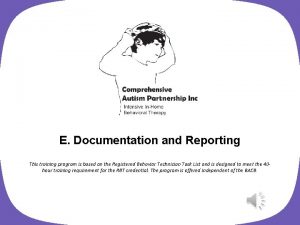


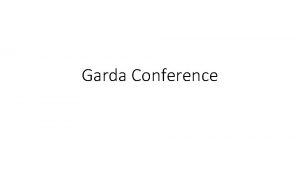
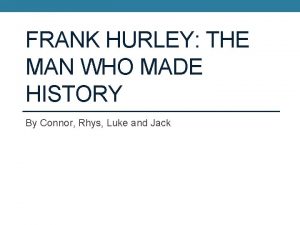

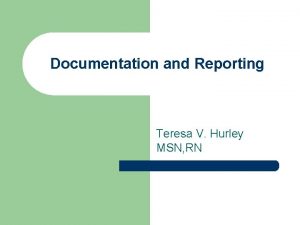


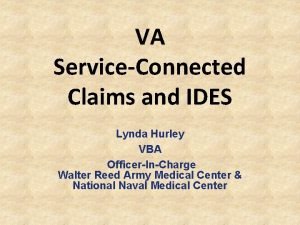
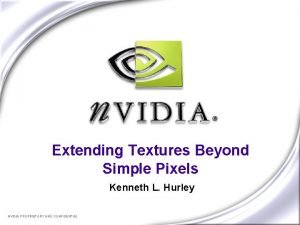
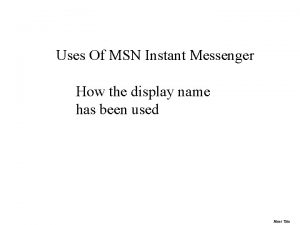
![Msn] Msn]](https://slidetodoc.com/wp-content/uploads/2020/12/3305482_b48b1a63b3813712ffceded1012692e7-300x225.jpg)
